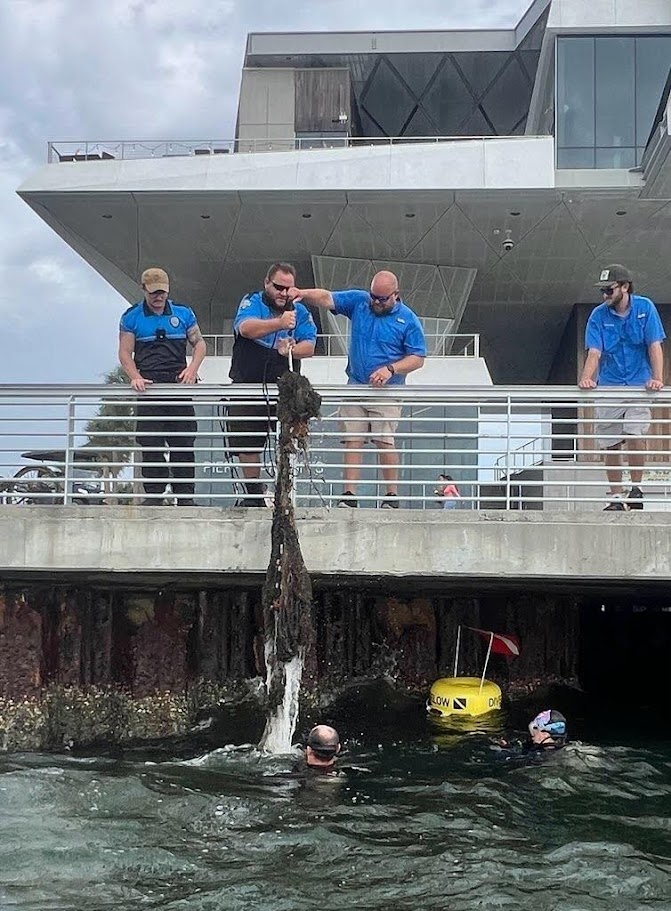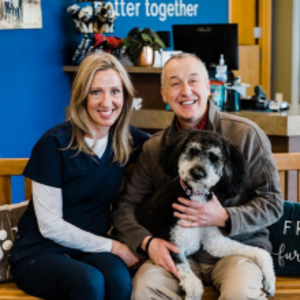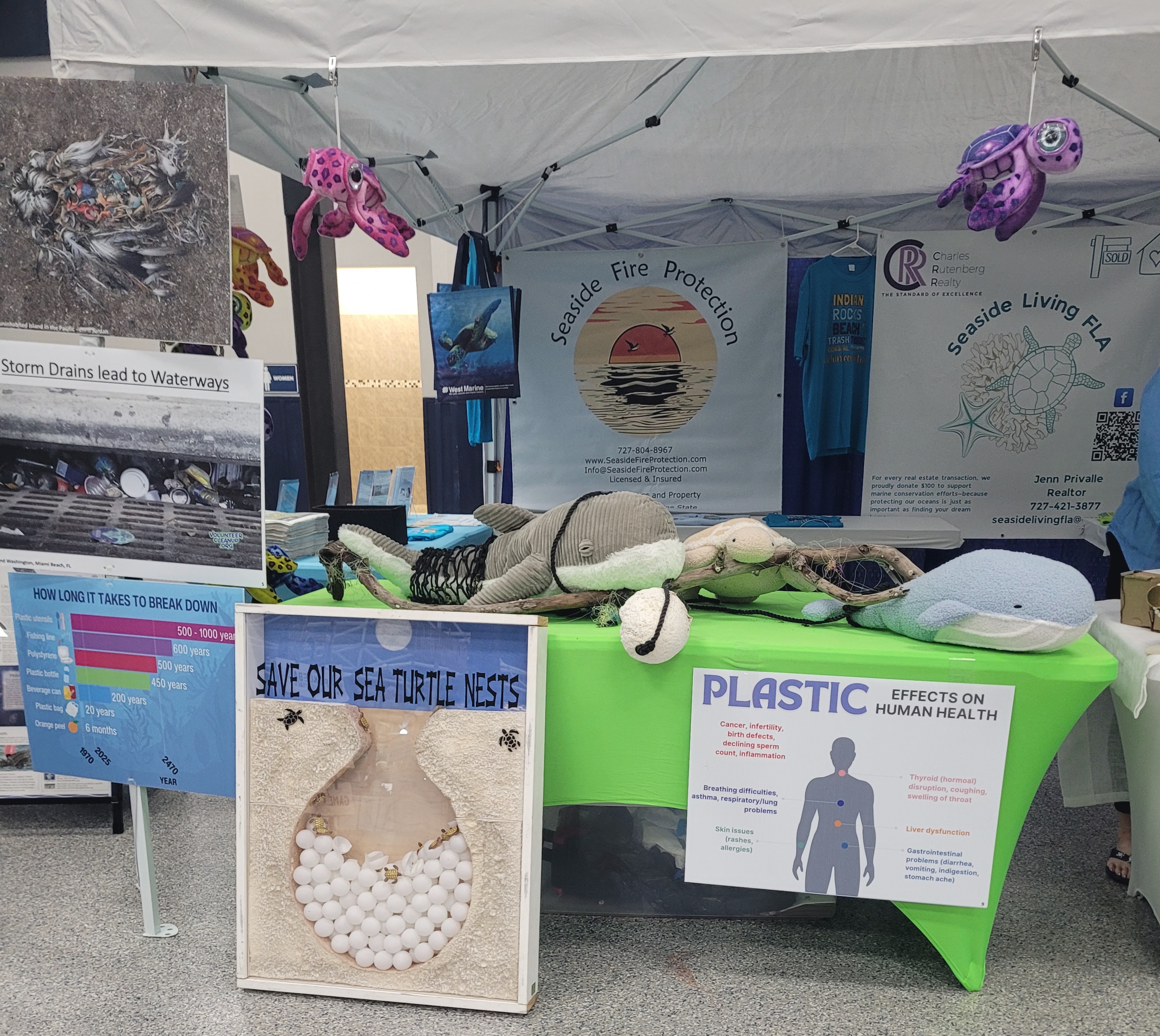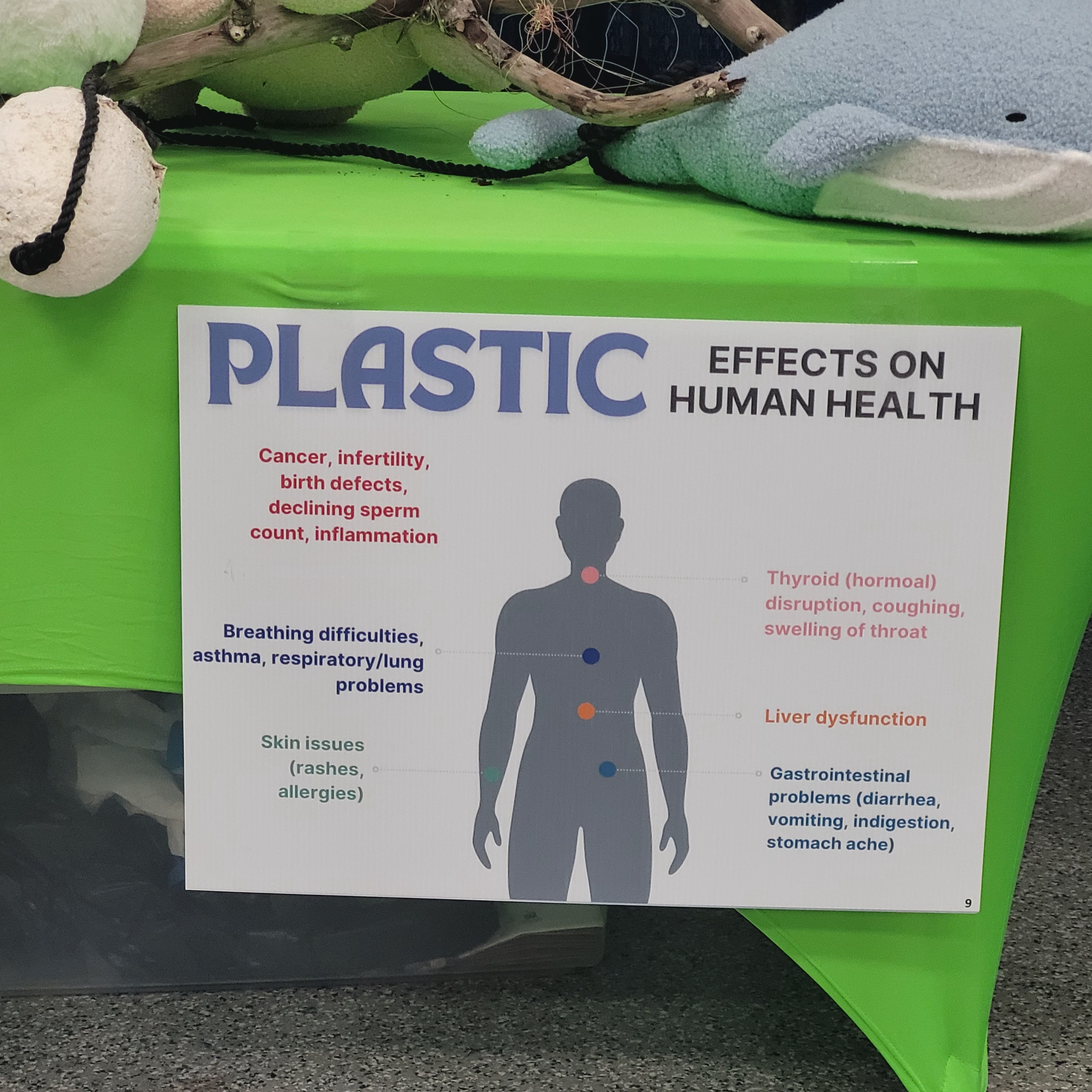-
 Mary Hanks 7/24/2025 4:17 PM
Mary Hanks 7/24/2025 4:17 PM- TEAM CAPTAIN
We like to repurpose plastic containers for plants that we're giving away. Not only are we reusing a plastic item, we're generally sharing a native plant that's pollinator-friendly...so we're helping the Earth in multiple ways. -
 Jessica Doten 7/24/2025 3:52 PM
Jessica Doten 7/24/2025 3:52 PM- Wildlife Guardian 🦉
This is a great idea! I have more plants than containers right now and I'm sure some of mine would love to have their own planter,
Karen Benson
"To erasing footprints is a daily action. Too many are left behind."
POINTS TOTAL
- 0 TODAY
- 0 THIS WEEK
- 950 TOTAL
participant impact
-
UP TO1.0low-plastic mealconsumed
-
UP TO87plastic itemsavoided
-
UP TO2.0low-plastic businessessupported
-
UP TO30bags of littercollected
-
UP TO3.0ideasshared
-
UP TO1.0advocacy actioncompleted
-
UP TO1.0community eventhosted or attended
-
UP TO547minutesspent learning
Karen 's actions
First Steps: Start with You
Understand Plastic’s Impact on My Health
Plastics can leach harmful chemicals into food, water, and the air we breathe. I will spend 5 minutes learning about the health impacts of plastic exposure and explore safer swaps — like choosing glass or stainless steel over plastic for food storage and drinking water.
Lead the Way: Shape Your Community
Find or suggest a refill station or reusable system
Access is key to making sustainable choices easier. I will suggest a refill station (like for water, soap, or dry goods) or a returnable container system in a space I use regularly — such as a school, office, store, or gym — to help make plastic-free options more visible and convenient for everyone.
Lead the Way: Shape Your Community
Participate in or organize a community clean up
Plastic pollution is visible in many communities. I will take part in or organize a cleanup event to remove litter, raise awareness, and spark conversations about how plastic ends up in our environment.
First Steps: Start with You
Swap one product for a refillable or plastic-free option
Even small swaps can add up to big impact. I will replace one product I use regularly — like soap, cleaning spray, or snacks — with a refillable or plastic-free version.
First Steps: Start with You
Choose secondhand or a recycled product for my next purchase
Buying recycled or secondhand products helps close the loop and reduces demand for new plastic. I will look for and purchase a product made from recycled materials or choose a secondhand option the next time I shop to keep valuable resources in use longer.
First Steps: Start with You
Design my grocery routine for less plastic
Our grocery habits are one of the biggest sources of single-use plastic, from packaging on produce to plastic bags and containers. I will spend 20 minutes researching low-plastic shopping strategies and make a list of things to look for or do differently the next time I go to the store.
First Steps: Start with You
Support businesses with plastic-free or refillable options
Where we spend our money shapes the market. I will support a business that offers plastic-free, low-waste, or refillable products or services.
First Steps: Start with You
Check recycling near me
Recycling rules vary by location. I’ll spend 20 minutes learning which plastics my local program accepts. This helps me avoid “wishcycling” — tossing items in the bin and hoping they’ll be recycled, even if they aren’t.
Level Up: Influence Friends and Family
Keep my reusable kit with me and model it in public
My everyday choices can influence others. I will carry and use a reusable kit in public spaces, modeling plastic-reducing behaviors and showing that small changes are possible.
Level Up: Influence Friends and Family
Start a household challenge to reduce plastic
Change starts at home. I will create a fun challenge with my household — like using no single-use plastic for a day or swapping out a product — to make plastic reduction a shared goal.
Level Up: Influence Friends and Family
Give a small gift that helps someone reduce plastic (e.g., tote, bottle, soap bar)
Giving can be an act of change and inspiration. I will give a thoughtful, plastic-free or plastic-reducing gift — like a reusable bag, bottle, or bar soap — to someone in my life and share why I chose it.
Level Up: Influence Friends and Family
Prepare a low-plastic meal with a friend or family member
Reducing plastic can be easier — and more fun — when shared. I will plan and prepare a meal with friends or family that minimizes single-use packaging and plastic waste.
First Steps: Start with You
Find out why plastic recycling isn’t working as we expect and where plastics end up
Many of us recycle with good intentions, but most plastic doesn’t get recycled. I will spend 20 minutes learning why plastic recycling falls short and what really happens to plastic waste.
First Steps: Start with You
Discover the difference between bioplastics, compostable plastics, and recyclable plastics
Not all “eco-friendly” plastics are created equal. I will spend 5 minutes exploring the differences between bioplastics, compostable plastics, and recyclable plastics—and what happens to each at the end of its life.
Participant Feed
-
REFLECTION QUESTION
 Level Up: Influence Friends and FamilyHow did planning and preparing the meal together affect the conversation about plastic? Did it inspire any new habits?
Level Up: Influence Friends and FamilyHow did planning and preparing the meal together affect the conversation about plastic? Did it inspire any new habits?
 Karen Benson 7/24/2025 12:00 PMWe talked about the hacks that can be used to repurpose plastic. There are so many. Plant container for pots and watering was one of the topics we chatted about.
Karen Benson 7/24/2025 12:00 PMWe talked about the hacks that can be used to repurpose plastic. There are so many. Plant container for pots and watering was one of the topics we chatted about. -
REFLECTION QUESTION
 Level Up: Influence Friends and FamilyWhy did you choose that particular gift, and how was it received? What conversations did it spark? Post a pic of the gift in the feed!
Level Up: Influence Friends and FamilyWhy did you choose that particular gift, and how was it received? What conversations did it spark? Post a pic of the gift in the feed!
 Karen Benson 7/24/2025 11:58 AMI gave my sister some reusable bags I have collected from Trader Joe's to keep in her car for her shopping trips.
Karen Benson 7/24/2025 11:58 AMI gave my sister some reusable bags I have collected from Trader Joe's to keep in her car for her shopping trips.-
 Carole Webber 7/24/2025 12:13 PM
Carole Webber 7/24/2025 12:13 PM- Pet Parent 🐾
We donate to various animal organizations and get free recycled bags and they're in our cars.
-
-
 Karen Benson 7/17/2025 2:24 PMThe challenge is going well. I am happy to see more participation this year. It always challenges me to learn more and do more.
Karen Benson 7/17/2025 2:24 PMThe challenge is going well. I am happy to see more participation this year. It always challenges me to learn more and do more.
Today, I decided to challenge what I know about Simple Green which is a product that was always thought of to be safe.
I use to sail a lot and stopped about 10 years ago. When Simple Green came out it could be found on almost every boat in the harbor. The products name influenced people to believe it was non toxic and good for the environment.
There was talk about it being toxic so today I read up on it.
This is what I found...
"Launched as an effective all-purpose cleaner, Simple Green quickly gained a reputation for being a safe, non-toxic, and eco-friendly product. However, early versions of the cleaner included 2-butoxyethanol, an ingredient known for causing skin and eye irritation as well as other health issues.
In response to concerns about 2-butoxyethanol, Simple Green revised its formulation by 2013. The new and improved recipe excludes harmful ingredients and includes water, Ethoxylated Alcohol, Sodium Citrate, Tetrasodium Glutamate Diacetate, Citric Acid, Isopropyl Alcohol, and Fragrance. The revised formula is designed to preserve its cleaning efficacy while ensuring that it is safe for users and less harmful to the environment."
Thank goodness! This is good to know.
-
 Chris Balchen 7/18/2025 7:35 AM
Chris Balchen 7/18/2025 7:35 AM- Adventurer 🏔
It's nice to hear a company like that be proactive in making it's product safer for us and the environment. Thanks for sharing. -
 Debbi Stone 7/17/2025 2:39 PM
Debbi Stone 7/17/2025 2:39 PM- Pet Parent 🐾
Thanks for posting! I didn't realize Simple Green revised its formulation. It's great to see companies adjusting and adapting when they can improve. I'll have to pick some up the next time I'm buying cleaning supplies.
-
-
REFLECTION QUESTION
 Level Up: Influence Friends and FamilyWhat did your household choose to focus on, and what was it like to work toward change together? What helped or hindered your progress?
Level Up: Influence Friends and FamilyWhat did your household choose to focus on, and what was it like to work toward change together? What helped or hindered your progress?
 Karen Benson 7/17/2025 2:05 PMI stopped buying individual containers of cottage cheese and yogurt years ago. I influenced 2 of my siblings to do the same in their homes. The noticed it made more sense and was not a big deal to put the items into a reusable container to make it to-go.
Karen Benson 7/17/2025 2:05 PMI stopped buying individual containers of cottage cheese and yogurt years ago. I influenced 2 of my siblings to do the same in their homes. The noticed it made more sense and was not a big deal to put the items into a reusable container to make it to-go. -
 Karen Benson 7/15/2025 6:38 AMI am challenging myself more. Being involved in dive clean-ups as well as being a diver, I see things that are repeatedly coming out of the water like casting nets and ghost traps, especially around piers.
Karen Benson 7/15/2025 6:38 AMI am challenging myself more. Being involved in dive clean-ups as well as being a diver, I see things that are repeatedly coming out of the water like casting nets and ghost traps, especially around piers.
I have challenged myself to talk to the appropriate people. Especially where there are signs posted not to use casting nets on piers. If they posted no casting nets signs on the water side, they can reduce the number of boaters who come to piers to collect bait with casting nets. I am trying to offer a solutions where it makes sense.
-
 Karen Benson 7/13/2025 9:23 AMWhile attending Shark Con in Tampa, I visited a Conservation booth. I snapped a photo of the attached sign showing how plastic effects your health. I did not know about the skin issues.
Karen Benson 7/13/2025 9:23 AMWhile attending Shark Con in Tampa, I visited a Conservation booth. I snapped a photo of the attached sign showing how plastic effects your health. I did not know about the skin issues.-
 Sandra B 7/13/2025 11:24 AM
Sandra B 7/13/2025 11:24 AM- Pet Parent 🐾
-
-
 Karen Benson 7/13/2025 9:17 AMI read some information from the European Commission to learn what Europe is doing to improve conservation efforts.
Karen Benson 7/13/2025 9:17 AMI read some information from the European Commission to learn what Europe is doing to improve conservation efforts.
There are many interesting things happening in Europe. For example:
Brands using non-recyclable or environmentally harmful materials will have to pay to clean them up.
I wonder if that price is past onto consumers? Anyway, it is an idea with some merit. -
REFLECTION QUESTION
 First Steps: Start with YouWhat’s one change to your grocery habits that felt more manageable than expected — or harder than expected? Why do you think some products, like produce, started amassing so much plastic packaging? Who is the plastic packaging really serving -- the consumer, the producer, or someone else?
First Steps: Start with YouWhat’s one change to your grocery habits that felt more manageable than expected — or harder than expected? Why do you think some products, like produce, started amassing so much plastic packaging? Who is the plastic packaging really serving -- the consumer, the producer, or someone else?
 Karen Benson 7/08/2025 9:06 AMI am going to stop by farm stands and go to farmer markets more often. I will reduce plastic, and I can eat healthier products. Of course, I will bring my recycled shopping bags.
Karen Benson 7/08/2025 9:06 AMI am going to stop by farm stands and go to farmer markets more often. I will reduce plastic, and I can eat healthier products. Of course, I will bring my recycled shopping bags. -
REFLECTION QUESTION
 First Steps: Start with YouWhat surprised you the most about the health impacts of plastic exposure, and how might this new understanding influence the choices you make around food storage and everyday products?
First Steps: Start with YouWhat surprised you the most about the health impacts of plastic exposure, and how might this new understanding influence the choices you make around food storage and everyday products?
 Karen Benson 7/08/2025 8:47 AMI was surprised to learn the following:
Karen Benson 7/08/2025 8:47 AMI was surprised to learn the following:- Low birth weights and preterm births
- Impaired fertility
- Maternal breast cancer risk
- Problems with brain development in young children
I am not expecting to have kids, but this information should be more readily available for those wanting to have children.
-
 Stacey Stamps 7/08/2025 4:36 PM
Stacey Stamps 7/08/2025 4:36 PM- Pet Parent 🐾
Agreed. This information should definitely be more readily available. I feel like I'm a total newbie learning all this and that I've just naively believe "they" wouldn't sell anything that could harm people.
-
REFLECTION QUESTION
 First Steps: Start with YouWhat was the most eye-opening fact you learned about the limits of recycling, and how might it shift your habits? How do you feel knowing that so much of what we put in recycling bins may never actually be recycled? What should we do differently?
First Steps: Start with YouWhat was the most eye-opening fact you learned about the limits of recycling, and how might it shift your habits? How do you feel knowing that so much of what we put in recycling bins may never actually be recycled? What should we do differently?
 Karen Benson 7/07/2025 10:46 AMThe vast majority of recycling facilities across the country accept only two types of plastic waste. Every year, millions of tons of waste end up in our oceans and rivers. Approximately 8.4% of plastic wastes are recycled to make other items, but this is the case only for 8.4%. The maker of plastic pushed states to require the chasing arrows symbol to appear on all plastic products between the 1980s and the 1990s. Plastics containing the No. 3 – plastics found in cosmetics packaging, shrink wraps, and piping – cannot be recycled.
Karen Benson 7/07/2025 10:46 AMThe vast majority of recycling facilities across the country accept only two types of plastic waste. Every year, millions of tons of waste end up in our oceans and rivers. Approximately 8.4% of plastic wastes are recycled to make other items, but this is the case only for 8.4%. The maker of plastic pushed states to require the chasing arrows symbol to appear on all plastic products between the 1980s and the 1990s. Plastics containing the No. 3 – plastics found in cosmetics packaging, shrink wraps, and piping – cannot be recycled.
How do I feel about this? It does not surprise me. When making purchasing choice, we can pay attention to the triangle numbers and learn what numbers are recycled. Choose products that are not wrapped in plastic or use containers we know can be recycled.-
 Cynthia Link-Kinney 7/07/2025 12:52 PM
Cynthia Link-Kinney 7/07/2025 12:52 PM- Pet Parent 🐾
I try to but in bulk, directly from a butcher of a farmers market to avoid plastic as much as possible. I also have reusable recycled bags that I keep with me when shopping.
-

